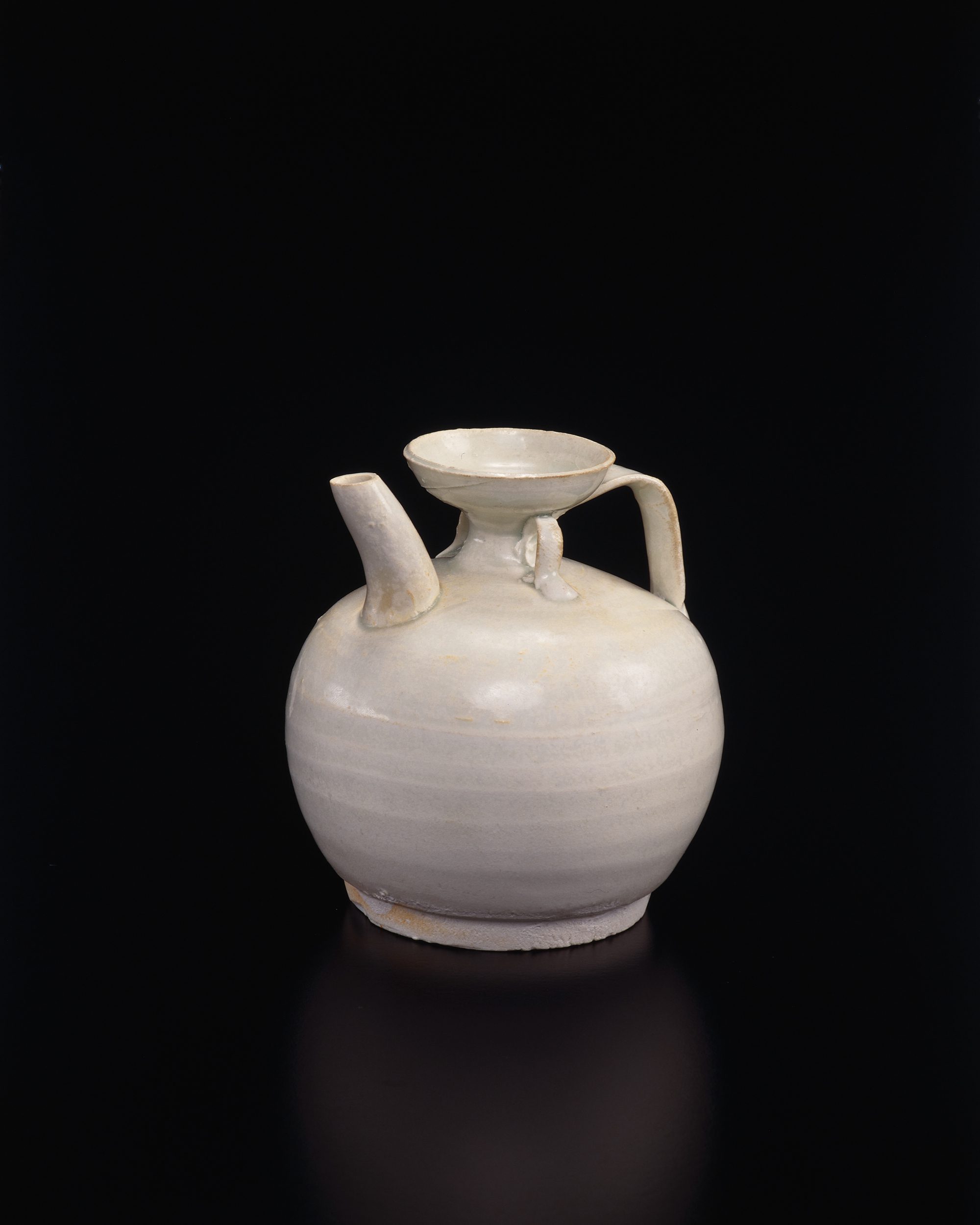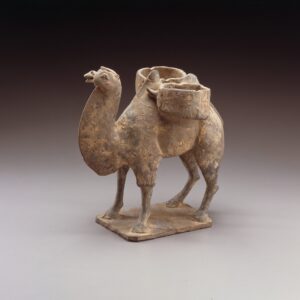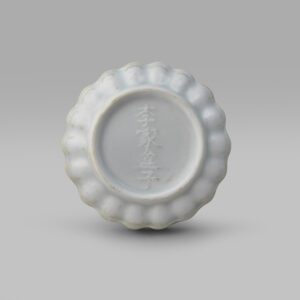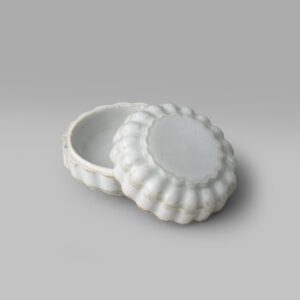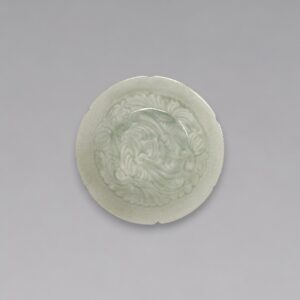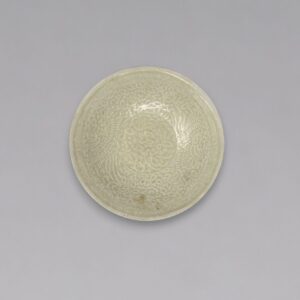The globular body set above a short foot, rising to a short, everted neck and flanked on the sides by a moulded flattened strap handle opposite a curved spout. The handle is incised with two characters in archaic script, reading ‘wang shi’ or ‘wang xi’. The ewer is covered in a blueish-white glaze that stops just above the foot. The centre of the base left unglazed with a burnt pale brown colour from the firing.
A ‘Qingbai’ glazed ewer (Song dynasty, late 10th or early 11th century)
Description
Dimensions: 10.5cm high
Provenance:
A private Belgian collection
The globular body set above a short foot, rising to a short, everted neck and flanked on the sides by a moulded flattened strap handle opposite a curved spout. The handle is incised with two characters in archaic script, reading ‘wang shi’ or ‘wang xi’. The ewer is covered in a blueish-white glaze that stops just above the foot. The centre of the base left unglazed with a burnt pale brown colour from the firing.
It is possible this piece dates to the early 11th century, when the earliest known Qingbai was produced in Jingdezhen, Jiangxi province. The quality of the extremely fine paste and of the glaze contrast with the slight imperfections of the shape, which evolved further during the Song dynasty. The inscription on the handle can be read as either ‘wang shi’, meaning ‘house of the imperial prince’ or ‘wang xi’, a family name.
A similar piece, possibly dated to the Five Dynasties (907-960), can be found in the collection of the Musée Guimet, Paris, illustrated in ‘Oriental Ceramics; the World’s Great Collections’, Tokyo, New York and San Francisco: Kodansha International Ltd., 1980-1982, vol. 7, pl. 69.
